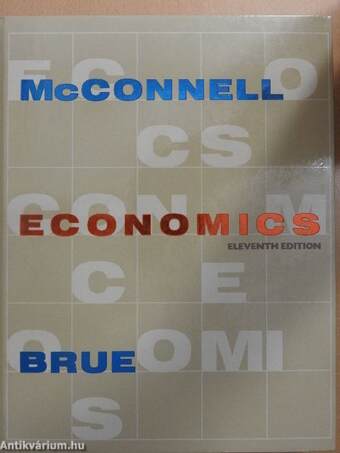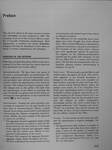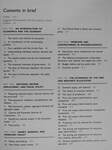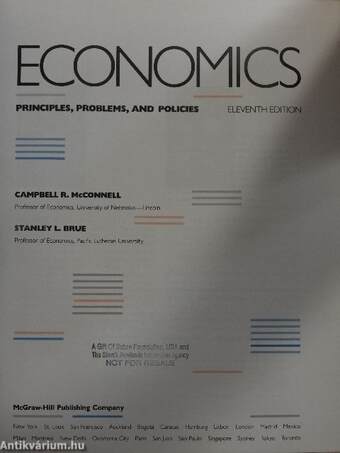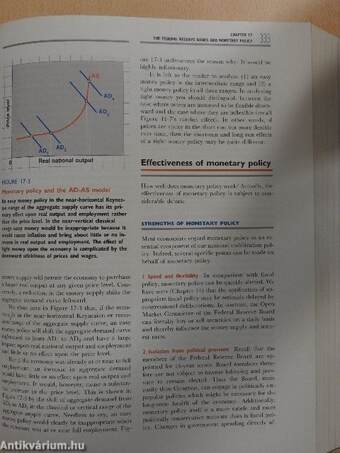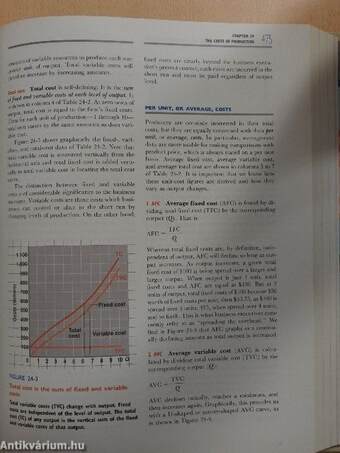1.117.562
kiadvánnyal nyújtjuk Magyarország legnagyobb antikvár könyv-kínálatát
Economics
Principles, problems, and policies
| Kiadó: | McGraw-Hill Book Company |
|---|---|
| Kiadás helye: | New York |
| Kiadás éve: | |
| Kötés típusa: | Fűzött kemény papírkötés |
| Oldalszám: | 933 oldal |
| Sorozatcím: | |
| Kötetszám: | |
| Nyelv: | Angol |
| Méret: | 26 cm x 21 cm |
| ISBN: | 0-07-044967-8 |
| Megjegyzés: | Színes ábrákkal illusztrálva. |
naponta értesítjük a beérkező friss
kiadványokról
naponta értesítjük a beérkező friss
kiadványokról
Fülszöveg
Preface
This eleventh edition is the most extensive revision since Economics was first published in 1960. The sweeping character of this revision reflects a number of mutually reinforcing considerations. Most importantly, a coauthor has joined Economics, bringing with him an abundance of new ideas relating to content, organization, and pedagogy.
OVERVIEW OF THE REVISION
Deferring a detailed discussion of this revision for a moment, let us first note that four major objectives have permeated our revision efforts.
Internationalization We have been very aware of the need to internationalize our presentation. Ex-amples, applications, and, more importantly, analysis and policy have all been substantially recon-ceived to reflect the globalization of the American economy. The chapter-by-chapter synopsis of specific changes later in this preface will make clear the extensiveness of our efforts in pursuing this goal. To identify at a glance each section where our coverage has been... Tovább
Fülszöveg
Preface
This eleventh edition is the most extensive revision since Economics was first published in 1960. The sweeping character of this revision reflects a number of mutually reinforcing considerations. Most importantly, a coauthor has joined Economics, bringing with him an abundance of new ideas relating to content, organization, and pedagogy.
OVERVIEW OF THE REVISION
Deferring a detailed discussion of this revision for a moment, let us first note that four major objectives have permeated our revision efforts.
Internationalization We have been very aware of the need to internationalize our presentation. Ex-amples, applications, and, more importantly, analysis and policy have all been substantially recon-ceived to reflect the globalization of the American economy. The chapter-by-chapter synopsis of specific changes later in this preface will make clear the extensiveness of our efforts in pursuing this goal. To identify at a glance each section where our coverage has been globalized, we have inserted this symbol in the Contents.
Macroeconomics Perhaps the most pervasive controversies in economics over the past decade or so have been in macroeconomics. Hence, a great amount of our energy was devoted to rewriting and restructuring the chapters comprising macroeconomics. Briefly, the main changes in the approach to macro are as follows:
? The aggregate demand-aggregate supply model has been extensively reworked to stress the difference between the determinants of the shapes of the aggregate demand and aggregate supply curves and the various curve shifters or non-price-level determinants of the curves. ^ We more fully integrate the aggregate demand-
aggregate supply model throughout the text. O We have emphasized the strong intellectual ties
of monetarism and rational expectations theory to classical economics.
? The differences in the competing macro paradigms have been brought into much sharper focus. These include differences in assumptions, analytical conclusions, and policy proscriptions.
? The locations of the various macro chapters have been significantly altered. In parncular, the chapters on the inflation-unemployment tradeoff and the public debt (Chapters 19 and 20) now follow Part 3 on money and monetary policy. We feel that this reorganization will substantially enhance student understanding of Chapters 19 and 20.
Modern topics We have made a special effort to add modern topics throughout the book. This will become apparent in our detailed description of changes in the edition. Just a few examples are state lotteries, economics of crime, the Coase theorem, current eclectic Federal Reserve policy, the median voter model, the U.S.—Canadian Free-Trade pact, antidumping duties in foreign trade, Gorbachev's reform program, intervention on exchange markets by the Group of Seven (G-7) nations, capital flight from the less developed countries, the impacts of airline deregulation, rent-seeking activity, the newly revised index of economic indicators, "real" business cycle theory, "P-star" as a monetary tool, and the savings and loan crisis. In short, we have endeavored to make the new edition a book for the 1990s.
Pedagogy In this revision we have been especially alert for opportunities to improve pedagogy. For example:
? All diagrams have been redrawn. A number of new diagrams and tables have been added to make it easier for the student to visualize the interrelation of concepts involved in some of the more complicated discussions. Tables 17-3, 19-1, and 23-3 and Figures 14-3, 16-2, 17-1, and 36-1 are illustrative.
XXVII Vissza
Témakörök
- Közgazdaságtan > Gazdaságpolitika
- Közgazdaságtan > Közgazdasági elméletek > Egyéb
- Idegennyelv > Idegennyelvű könyvek > Angol > Közgazdaságtan > Gazdaságpolitika
- Közgazdaságtan > Lexikonok, kézikönyvek, szótárak
- Idegennyelv > Idegennyelvű könyvek > Angol > Közgazdaságtan > Lexikonok, kézikönyvek, szótárak
- Idegennyelv > Idegennyelvű könyvek > Angol > Közgazdaságtan > Közgazdasági elméletek > Egyéb


